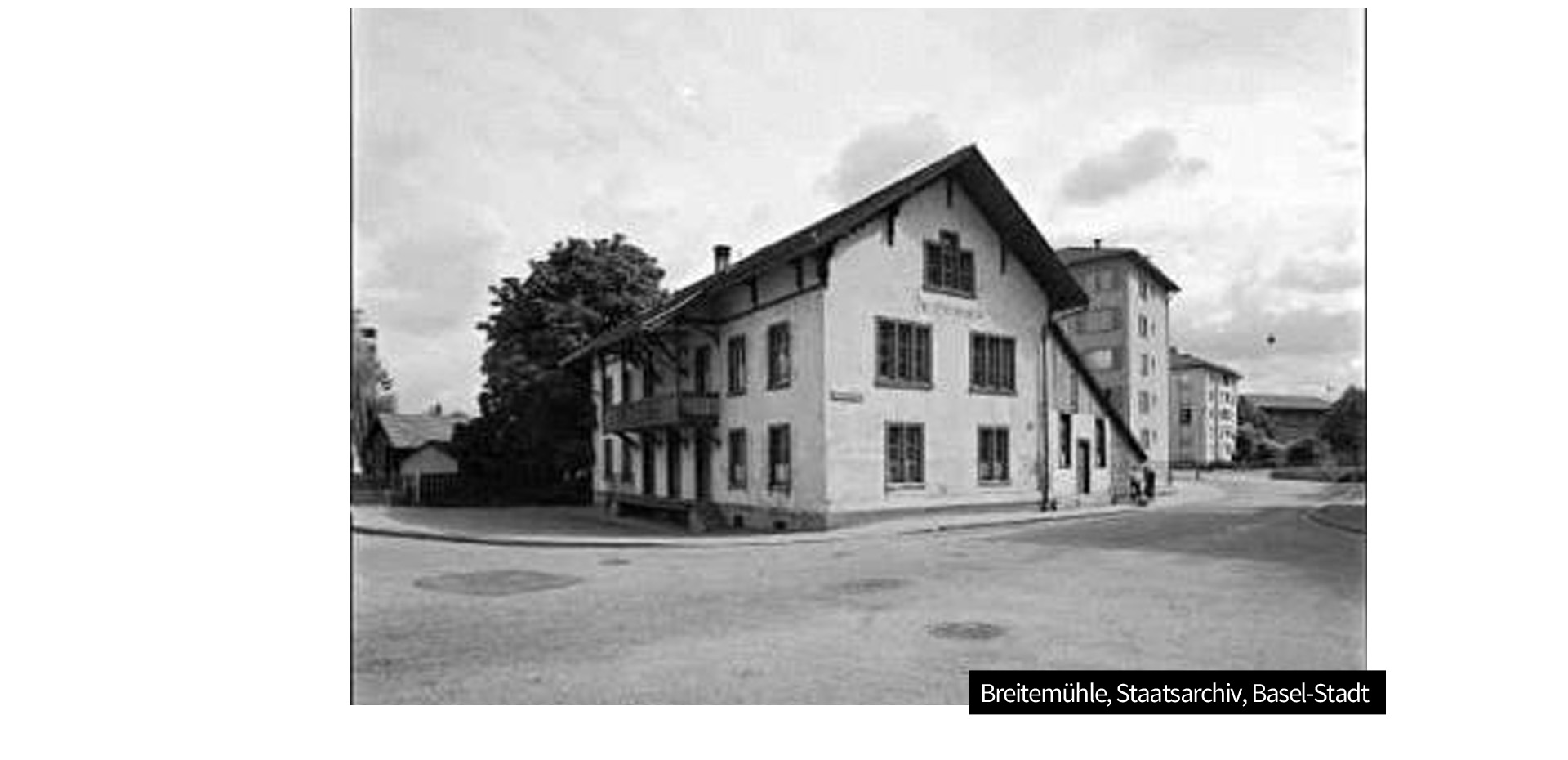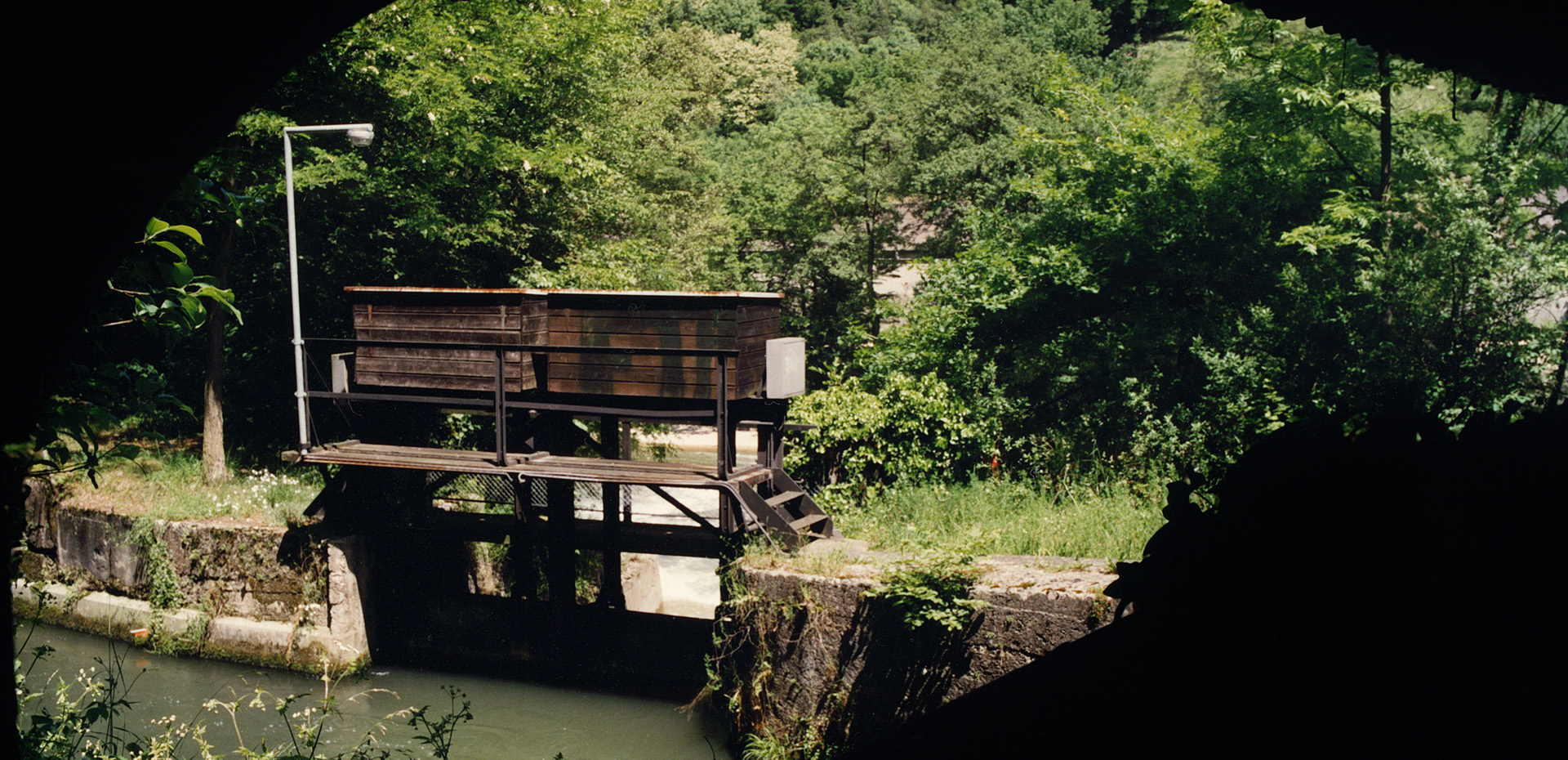Nasenbächlein (Nase Brook)
The nase, which is under protection today, was once one of the most inexpensive fish on the Basel fish market. The “Nasenstrich” [nase run], during which thousands of these fish returned to their spawning grounds on the Wiese or the Birs, was particularly popular. Fishermen retained their abundant catch in the small canal that flowed from the St. Albanteich into the Birs in the area of today’s Wildersteinerstrasse.
The canal had been built so that the water of the Teich could be drained off while maintenance work was carried out in the St. Alban Valley. It also drove a mill wheel:
In 1673, Niklas Heussler built a bleaching house and a fulling house here. The so-called Breitemühle was converted into a grain mill in 1860, which was in operation until the middle of the 20th century (demolished in 1961).
A pond was created at the Nasenbächlein in 1885, which was used for ice production in winter. Stored in a cavern in the ground, the ice blocks remained frozen and lasted until summer. However, the ice pond was poorly maintained, which is why it silted up, and in 1904, in accordance with a government council order “to be carried out expediently” (i.e. as quickly as possible), it was filled up.
Bild Nr. 2 Staatsarchiv Basel-Stadt, Bildbezeichnung: BSL 1013 1-1407 1
















